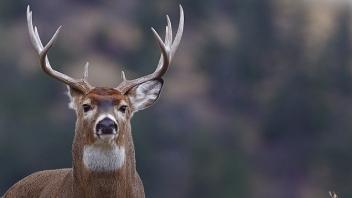Responding to chronic wasting disease (CWD)
Learn about how we are preparing to respond to chronic wasting disease (CWD) if it arrives in Ontario.
Monitoring chronic wasting disease
We are continuing our surveillance measures to monitor wildlife for chronic wasting disease.
If you observe these signs in a wild cervid (member of the deer family), contact your local ministry work centre or email CWD@ontario.ca.
Overview
Since its discovery in 1967, CWD has spread across much of North America. We are building on the lessons learned over the past 50 years of CWD management in North America to guide our actions in Ontario.
Once established in the wild, Chronic Wasting Disease (CWD) is very challenging to control or eliminate. Our best defense is to prevent CWD from ever arriving in Ontario. If it does arrive, a rapid and aggressive response is needed to stop the spread and hopefully eliminate it from the area.
Ontario is working to identify and respond quickly to any cases of CWD detected in the province. Read our CWD prevention and response plan.
We will update this page with public notices, safety information and details about our actions if CWD is detected in Ontario.
If CWD is detected in Ontario
To be effective, we will need to adapt to the specific situation. The direct involvement and cooperation of partner agencies, local government, stakeholders, Indigenous communities and organizations and the public will be essential to a successful response.
If CWD is detected in Ontario, we will consider response options that have been successful in other jurisdictions, including:
- intensive population reduction of wild cervids near cases to remove infected animals
- enhanced surveillance of wild cervids, including mandatory testing of all hunter-harvested cervids to better understand the extent of infections
- prohibiting baiting and feeding of wild cervids to prevent animals from gathering
- enhanced rules for the disposal of cervid carcasses and body parts to prevent accidental spread of CWD prions (infectious abnormal proteins that cause CWD)
- prohibiting any movement of captive cervids (currently movement may occur when permitted)
We will lead the response to any detections of CWD in free-ranging cervids in Ontario. The Canadian Food Inspection Agency (CFIA) responds to detections of CWD in captive cervids in Canada, in coordination with provincial natural resources and agriculture ministries.
Doing nothing is not an option. Ontario’s goal in any case of CWD detection will be a rapid, effective response to protect wild cervids in the province.
Impacts of CWD
Jurisdictions where CWD has become established have seen negative impacts from the loss of healthy cervids.
Cultural impacts affecting:
- the food security of Indigenous peoples
- hunting culture
Economic impacts on the hunting community and captive cervid industries:
- declines in resident and non-resident hunter participation
- loss of stock and financial strain for captive cervid industries
- rising costs of wildlife management
Wildlife impacts:
- long-term reductions of cervid populations
- disruptions to predator-prey dynamics
- alterations to the balance of ecosystems
Ontario attracts many cervid hunters from within the province and from other jurisdictions. In 2019, deer hunters spent $346.5 million on deer hunting and related industries in Ontario.
If CWD is found in Ontario, early detection of the disease through enhanced surveillance combined with a quick and aggressive response to positive cases will help to minimize the economic, ecological and cultural impacts.
